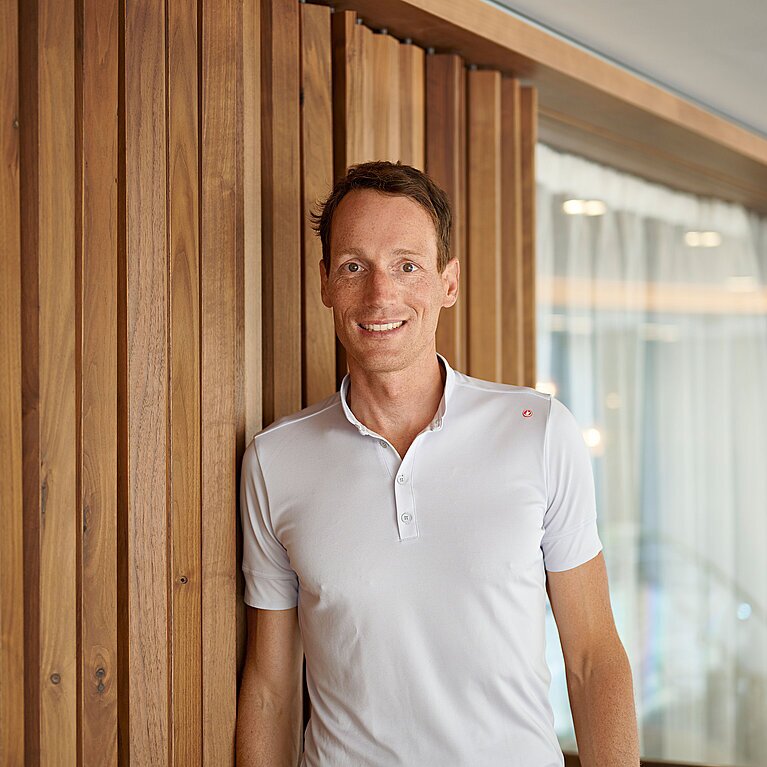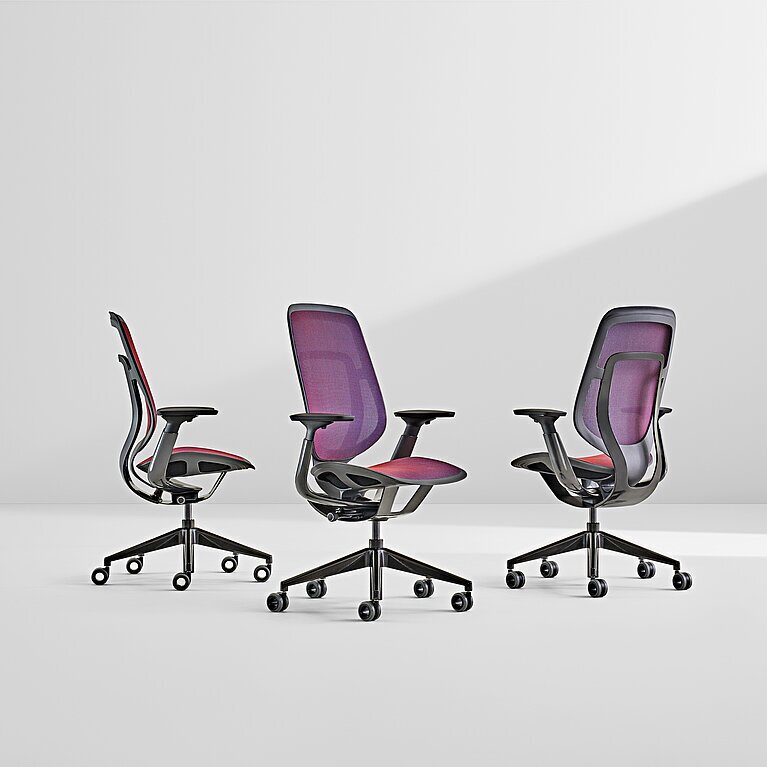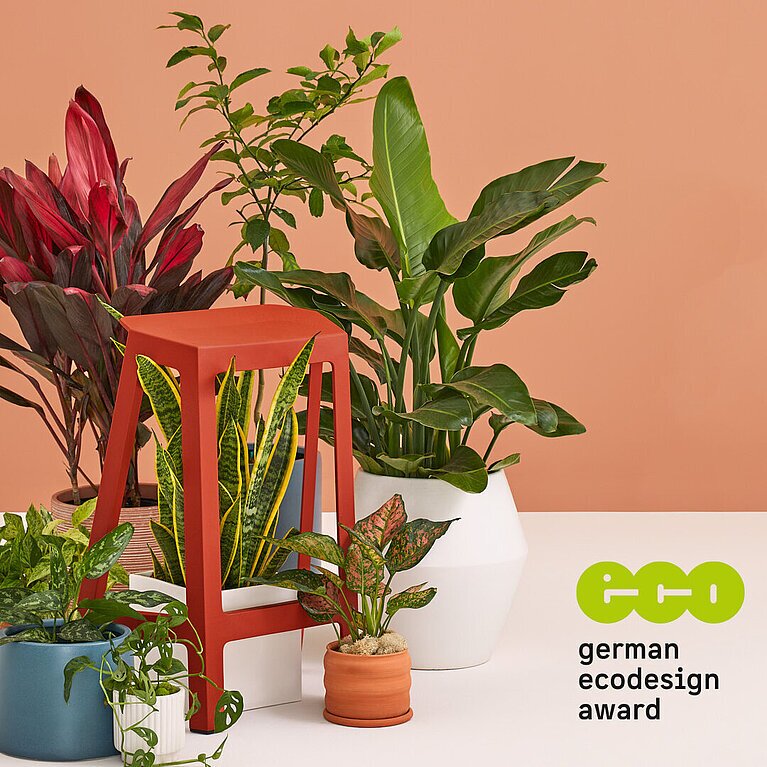


OLIVER HERWIG: Last year, Steelcase launched the Karman office chair. The name alone is an indication that you have chosen to push the boundaries.
FABIAN MOTTL: Yes, indeed. The Kármán line is the boundary between the Earth’s atmosphere and outer space. And the Steelcase Karman also pushes the boundaries. It showcases what can be achieved by steadfastly sustainable design – from development and production to use and beyond. At Steelcase, we pursue a global sustainability strategy that spans product design and manufacture, DEI (diversity, equality and inclusion) and continuing training. We’ve been pioneers of sustainable product design for decades. Our 2023 Steelcase Impact Report details the status quo of our strategies and projects, and outlines our medium- and long-term sustainability goals and targets for the future.
OH: So what does that mean for your products?
FM: Our strategy is embodied in our product families. Our Gesture, Think, Please and Steelcase Series 1 and 2 chairs, the Trivio table, the Island Collection system and the WorkValet locker system are already available with Climate Impact Partners’ CarbonNeutral® product certification. The most recent of our innovative Steelcase products, the Karman ergonomic office chair, is manufactured from sustainable materials using the absolute minimum of components and resources. This enables us to minimize carbon emissions and pollution.
OH: Where does design reach its limits in our striving to bring humanity and nature into alignment?
FM: At Steelcase, our international team at various locations develops workspace solutions that support millions of people around the world in their day-to-day working lives. But we can’t succeed in this mission alone, So we work with a host of international suppliers and manufacturers and maintain partnerships to realize our sustainable product designs. To fulfil our sustainability pledge to people and the planet, we focus on six significant areas of impact: Help Communities Thrive, Foster Inclusion, Act with Integrity, Reduce our Carbon Footprint, Design for Circularity, and Choose + Use Materials Responsibly.
OH: On the other hand, where are the limits for your customers? What additional costs are you willing to shoulder in order to benefit the environment?
FM: We firmly believe that all companies and organizations have the responsibility to build the principles of sustainable action into the design and implementation of forward-thinking, equitable workplaces. To achieve this, we use processes that help us to identify people’s various needs and translate them into inclusion strategies while also fulfilling our customers’ requirements.
Perseverance is essential for us to reach our sustainability goals and targets without raising costs or impacting production. Every day we make decisions to keep pushing forward to achieve success. In addition, we launched the “Better is Possible” speaker series, where experts share innovative approaches to taking climate action, combating inequities and boosting equality. These talks are extremely popular and also provide our customers with transparent insights into our approach.

1
HELP COMMUNITIES THRIVE
Our Better Futures Community develops innovative social programs to build equitable access to opportunity and provides financial support.
2
FOSTER INCLUSION
We design spaces, tools and experiences that support our employees, partners and customers in feeling seen, heard and valued.
3
ACT WITH INTEGRITY
We give all our employees the opportunity to represent their values, and are rigorous in how we implement policies that live up to our own ethics and goals.
4
DESIGN FOR CIRCULARITY
We implement impactful reuse, recycling and remanufacturing strategies across our entire product design and delivery process.
5
REDUCE OUR CARBON FOOTPRINT
We work toward and meet more ambitious carbon reduction goals at a greater global scale than anyone in our industry.
6
CHOOSE + USE MATERIALS RESPONSIBLY
We source and select materials that are healthier for people and the planet, and manage resources such as water and energy wisely.
OH: Transformation and material circularity are currently cutting-edge themes. Where is Steelcase in this process?
FM: Our philosophy can be summed up as “Designing for Circularity”. This means that from the earliest idea and product development stages, we plan to create a product that factors in the potential for circularity or already draws on material cycles as sources. Like our partnership with Danish textile manufacturer Gabriel, where Steelcase supplies Gabriel with textile offcuts from our Sarrebourg production facility as the basis for sustainable textile production. Gabriel spins the fabric offcuts into new yarn, which thus comprises 100 percent scrap fabric. These environmentally friendly yarns comply with the same quality standards as all other Gabriel textiles.
How can we and our products contribute towards a better future for people the planet?
The partnership between Steelcase and Gabriel demonstrates that even waste is a valuable and recyclable resource that can continuously be put back into the production cycle.
OH: What is your vision for the manufacturing industry of the future, operating production in alignment with nature?
FM: We aim to support people in giving their best at the workplace. How? By designing the best workplace for them. As a twenty-first century company, we need to ask ourselves how we and our products can contribute towards a better future for people and the planet. And our philosophy for the future is “Better is possible”. To achieve this goal, we’re building a Better Futures Community, bringing together our people with international partner organizations to help address the root causes of inequities around the world.
